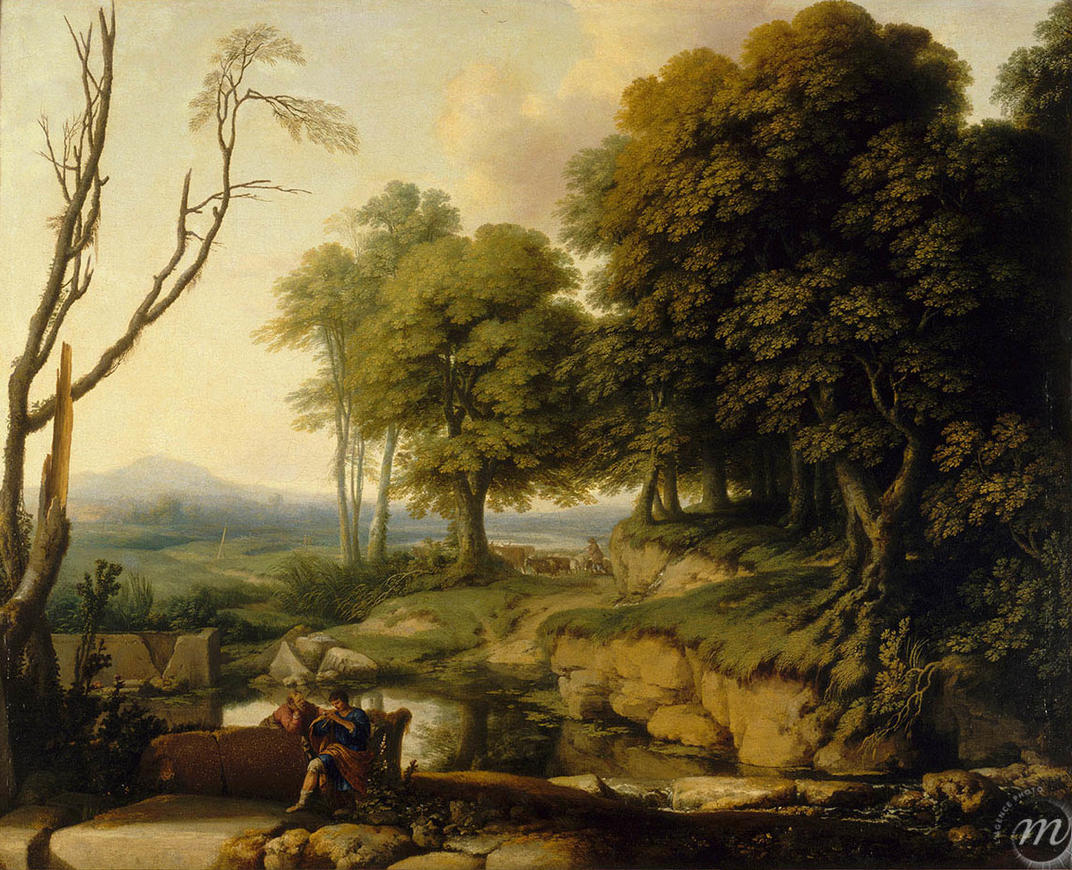At the edge of a forest of dense trees, a river flows. In the background, we see a verdant plain and, in the distance, a mountain. Only La Hyre could compose a work so admirable and worrying at the same time …
Certain elements appear, disturbing the apparent calm. First of all, three characters: a flautist, accompanied by a listener, and a shepherd leading his herd to the edge of the forest. They are so small we hardly see them. That makes sense, as the subject of this work is nature!
La Hyre took a particular interest in describing the reality of this nature. He used gradients of blues to create an atmospheric perspective, giving the impression of depth in the distance.
It is, however, difficult to determine the season or time of day.
This is La Hyre's hallmark, as an artist who loved to create timeless landscapes. It is also difficult to say where the action is taking place. It is, therefore, an imaginary landscape, the recreation of an ideal country: Arcadia!
A seemingly insignificant detail finally comes to tarnish this perfect joy. Look at the trees. An opposition is created between the set of dense trees to the right and the two dried out trunks to the left, like a reminder that human lift is fragile and that, like all natural things, it will come to an end.
Detail: In his representation of the forest, La Hyre takes his inspiration from the Flemish artist Paul Bril, who created Jonas' Wreck, housed in the Lille Palais des Beaux-Arts.

At the edge of a forest of dense trees, a river flows. In the background, we see a verdant plain and, in the distance, a mountain. Only La Hyre could compose a work so admirable and worrying at the same time …
Certain elements appear, disturbing the apparent calm. First of all, three characters: a flautist, accompanied by a listener, and a shepherd leading his herd to the edge of the forest. They are so small we hardly see them. That makes sense, as the subject of this work is nature!
La Hyre took a particular interest in describing the reality of this nature. He used gradients of blues to create an atmospheric perspective, giving the impression of depth in the distance.
It is, however, difficult to determine the season or time of day.
This is La Hyre's hallmark, as an artist who loved to create timeless landscapes. It is also difficult to say where the action is taking place. It is, therefore, an imaginary landscape, the recreation of an ideal country: Arcadia!
A seemingly insignificant detail finally comes to tarnish this perfect joy. Look at the trees. An opposition is created between the set of dense trees to the right and the two dried out trunks to the left, like a reminder that human lift is fragile and that, like all natural things, it will come to an end.
Detail: In his representation of the forest, La Hyre takes his inspiration from the Flemish artist Paul Bril, who created Jonas' Wreck, housed in the Lille Palais des Beaux-Arts.